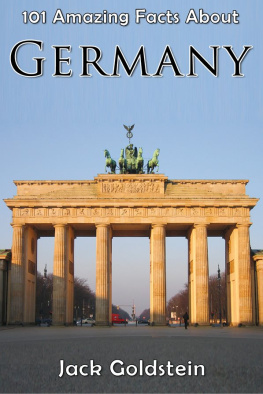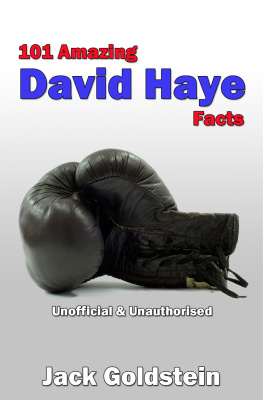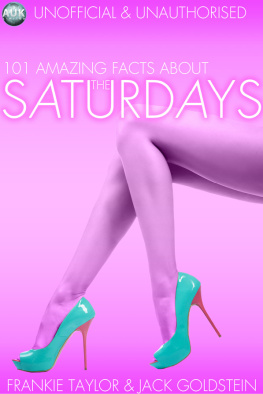Title Page
101 AMAZING FACTS ABOUT SPAIN
Jack Goldstein
Publisher Information
Published in 2013 by
Andrews UK Limited
www.andrewsuk.com
The right of Jack Goldstein to be identified as the Author of this Work has been asserted by him in accordance with the Copyright, Designs and Patents Act 1998
Copyright 2013 Jack Goldstein
All rights reserved. No part of this publication may be reproduced, stored in a retrieval system, or transmitted, in any form or by any means without the prior written permission of the publisher, nor be otherwise circulated in any form of binding or cover other than that in which it is published and without a similar condition being imposed on the subsequent purchaser. Any person who does so may be liable to criminal prosecution and civil claims for damages.
Disclaimer: All facts presented in this title were gained from common and reputable sources in print and on the internet. If any detail within this title is found to be incorrect, the author will be happy to publish a corrected version.
Introduction
In this amazing eBook you can find more than one hundred facts about the country of Spain. Separated into sections such as its geography, its landmarks, famous Spanish figures from history and many more you will find some fascinating information inside!
Whether you are planning on visiting Spain, working on a geography project or just want to know more about this beautiful country, this is an excellent addition to your bookshelf. Find the information you need, fast!
Follow Jack Goldstein on Twitter @GoldsteinBooks
Visit Goldstein Books at www.jackgoldsteinbooks.com
Key Facts and Figures
- Spain is the sixth most populated country in Europe.
- It covers nearly 200,000 miles in area.
- Spain shares borders with Gibraltar, France, Andorra and Portugal.
- Spain boasts the thirteenth largest economy in the world.
- The capital of Spain is Madrid.
- The country has a rich history and has been ruled by the Roman empire and by Moorish Muslims from North Africa. In the late fifteenth century however, Spain as we know it today was unified.
- Spain has a population of around 47 million.
- The currency used in Spain is the Euro.
- It has a GDP of around 1.05 trillion Euros - at the time of writing that is around 1.8 trillion US Dollars.
- Spain was one of the first countries to colonize the new world, meaning many people across the globe speak Spanish - it is in fact the worlds second highest spoken first language.

The Geography of Spain
- Spains territory includes two major island groups - the Balearic islands in the Mediterranean, and the Canary islands which are in fact in the North Atlantic!
- The Spanish island of Ons is home to just 61 people (at the last count).
- Spain is the least densely populated country in Europe - on average there are just over 200 people per square mile.
- The most famous rivers in Spain are the Duero, Ebro, Guadiana, Guadalquivir and the Tajo.
- Spains tallest mountain is in fact on the island of Tenerife -Mount Teide is also the worlds third tallest volcano!
- The largest cities in Spain are Madrid, Barcelona, Valencia, Seville and Zaragoza.
- The Basque region is one of Spains most prosperous areas. Much of the Basque population do not consider themselves truly Spanish, and they have campaigned for many years for independence from the country.
- Spain is a rich source for mining - it has some of the largest gold deposits in Europe and is one of the worlds largest suppliers of marble and granite.
- The country also has rich uranium deposits, and have plenty of faith in nuclear power - nearly a third of Spains electricity is generated in this way.
- The affiliation of Gibraltar has always been a contentious issue between Spain and the United Kingdom. In recent years, Spain has been quite vocal about wishing to regain control over the territory.
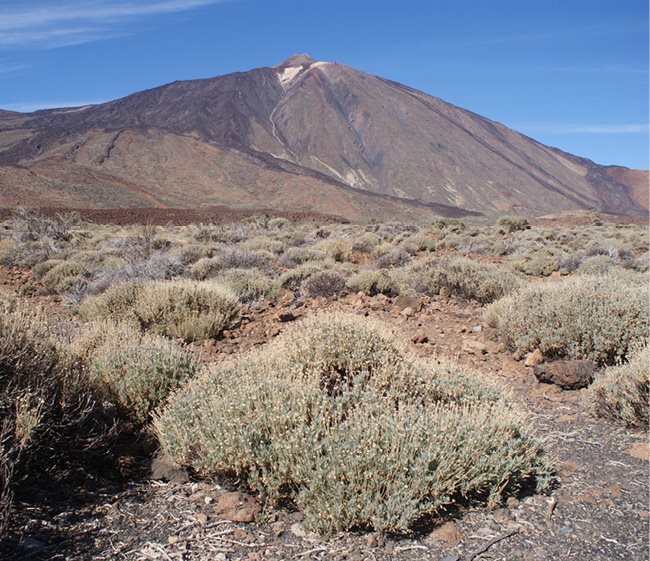
Tenerifes Mount Teide
Places to Visit
- Madrids Palacio Real (Royal Palace) - the official residence of the King of Spain.
- La Concha - said to be one of the best beaches in Europe.
- The Aqueduct of Segovia - Spains best-preserved Roman monument.
- Cuenca - Medieval city built on the side of a mountain.
- Sagrada Familia - Gaudis cathedral in Barcelona; building work started in 1882 and continues to this day!
- El Escorial - a beautiful historical residence of the King of Spain.
- Mezquita of Cordoba - stunning Islamic mosque which was converted into a cathedral in 1236.
- The Alhambra Palace - 9 th Century fortress, later converted into a royal palace.
- Buen Retiro Park - filled with beautiful sculptures, monuments and many other works of art.
- Plaza de Toros de Las Ventas - Madrids famous bullfighting ring.
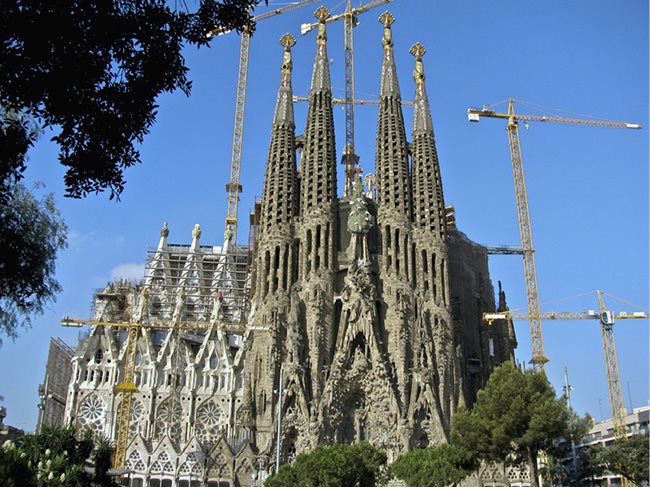
Gaudis Sagrada Familia
Madrid
- Madrid is built around the Manzanares river.
- It is the third largest city in Europe.
- Today it is home to nearly three and a half million people.
- The citys official symbol is that of a bear on its hind legs eating berries from a madrono tree - this is said to represent the citys growth and the importance of wood which was required to build the whole of Spain.
- Madrid is considered the financial centre of the whole of Southern Europe.
- It is thought that Madrid was originally called Magerit, an Arabic word meaning Place of Abundant Water.
- Madrid is the highest capital city in Europe, being on a plateau located around 650m above sea level.
- If you visit Madrid, make sure to go to the golden triangle - three art galleries situated in close proximity to one another - The Prado with works by artists such as Botticelli and Goya, the Museo Thyssen-Bornemisza with some incredible Renoirs, and the Museo Reina Sofia with its collection of Picassos and Dalis.
- Real Madrid, one of the citys football clubs, is one of the most successful of the modern era, and the teams stadium, The Bernabeu regularly hosts crowds of 85,000 to watch games there.
- Every year the city hosts a huge carnival, during which people dress in amazing costumes and culminates in the burial of the sardine, where an effigy of an enormous fish is placed inside a coffin and burned!
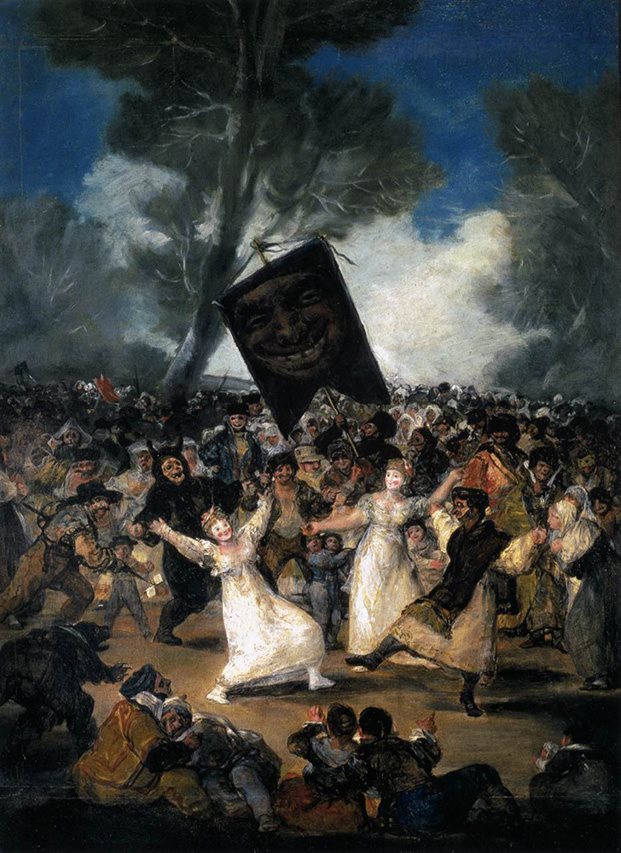
Francisco Goyas The Burial of the Sardine
History
- When the Phoenicians made it to the territory in the 8 th century BC, it is said that they called it Span , which meant The Hidden Land.
- Another theory believed by many is that the word Spain could be derived from the Phoenician word Ispania , which meant land of the rabbits.
- One might assume that under Islamic rule during the middle ages, Spains Christians and Jews would have faced terrible punishment - in fact they did not; they were permitted to practice their own religions, as long as they paid a special tax!
- A wide variety of people have settled in Spain, from the Greeks and Romans to the Muslims of North Africa, the Celts, the Visigoths and many more.
- Spain is famous for its explorers - especially those who we picture in warm far-reaching parts of the world; however in 1603 Gabriel de Castilla became the first man to explore the freezing cold Antarctica!
Next page


